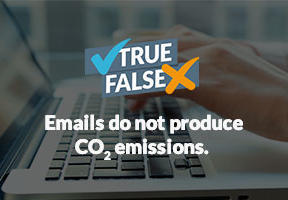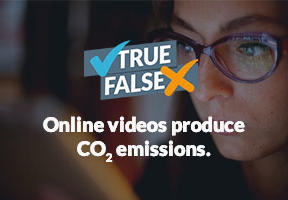What Is Environmental Taxation?
10 min read
The goal of environmental taxation – or ecotaxes – is to influence individual and collective decisions that affect the environment, not by introducing new standards or laws, but by acting on cost factors that impact these decisions. By applying the “polluter pays” principle, environmental taxation imposes financial constraints that give consumers and producers incentives to behave “virtuously” in a given area. At the same time, it can reduce the costs of decisions that benefit the environment.

© Damien MEYER / AFP - In France, a tax on electricity helps support the development of renewable energies.
Environmental taxes can be applied in various areas, such as pollution, threats to , and consumption of scarce natural resources. Since the 1990s, the growing awareness of caused by human activity has led to the introduction of “carbon taxes”. This concept consists in “putting a price on carbon” (CO2) in order to help reduce emissions. In practice, this often amounts to taxing the consumption of fossil fuels, such as and heating oil.
The first such taxes appeared in 1992 in the Nordic countries, notably Sweden,
nd then in Germany at the turn of the century. In 2010, other countries, including the United Kingdom, Spain and France, began to adopt similar measures. A carbon tax is not a blanket levy applied everywhere on all products. There are many exemptions, depending on the business sector, and widely differing practices among European countries. A metric ton of varies from €2 in Estonia, to around €45 in France, to €120 in Sweden. The average in Europe is between €20 and €30 per metric ton.
Where Do the Proceeds Go?
Carbon tax revenue allocation has always been subject to debate, as the purpose of the levies should not be simply to balance the national budget.
The underlying logic is that carbon taxes should support environmental protection and the fight against . However, they can also be used to reduce other levies, such as payroll and wealth taxes, and thereby boost economic performance. In addition, carbon taxes are often accompanied by measures to offset their impact on low-income households.
This is because these taxes have an unequal effect, as they are based on fossil fuel consumption rather than on household income levels. People living in rural or suburban areas who depend significantly on their cars, as well as low-income families in energy-hungry housing, are particularly susceptible to increases in fossil fuel prices.
Example in France: The TICPE
In France, the carbon tax is called the “carbon component” or “climate-energy contribution”. It is not a specific tax levied directly, but rather a “component” of other taxes on energy products. After remaining unchanged at €7 until 2014, the price of a metric ton of CO2 rose to €30.50 in 2017 and €44.60 in 2018.
Since 2014, it has notably been used for the domestic excise tax on petroleum-based fuels (known in France by its acronym, ). This tax on gasoline and was first enacted in 1928 and increased sharply after the oil crisis of 1973, to become the French State’s fourth-largest source of revenue.
When prices were very low, scheduled carbon tax increases went by relatively unnoticed by consumers. However, as the price per rose again, the cumulative effect saw prices at the pump soar. In the face of protests, in late 2018 the French government decided to postpone any further increases for one year. Previously, the carbon tax was supposed to continue rising in steps until it reached €86 per metric ton of CO2 in 2022 and €100 per metric ton in 2030.
In addition, taxes on diesel and heating oil are increasing even faster in order to reduce the difference between their tax rates and that of gasoline, and also to discourage their use, as they emit high amounts of particulate matter and are very popular in France. All together the taxes, for the most part the TICPE and VAT, represent approximately 60% of the price of a liter of fuel.
The same principle has been applied to natural gas, with the TICGN tax, and to , via the TICC tax1.
Another Type of Tax: The CSPE
To support the development of renewable energies, the French government has also introduced a tax on , known as the CSPE. At first, this levy had other objectives, such as bringing rates in overseas France closer in line with those on the mainland and subsidizing low-income households. Gradually, however, the purpose of the tax was broadened to include the transition to a power generation mix with a greater contribution from solar photovoltaics and wind.
As of 2019, more than 40% of CSPE revenue goes to supporting renewable energies. The CSPE has been multiplied by six since the tax was created, and now represents about 16% of an average electricity bill, according to France’s Energy Regulation Committee (CRE)2.
Government Subsidies for the Energy Transition
France’s multi-year energy plan (PPE) adopted in late 2018 set the country’s main energy objectives for the next ten years, specifying the subsidies that the government would grant to citizens in order to help them make the necessary changes.
Automobiles
A new incentive program has been put in place to encourage people to switch to a new, cleaner car. It is expected to help one million beneficiaries by 2022, with an extra incentive for low-income earners and people who must commute long distances. About 70% of the beneficiaries are in the zero income-tax bracket.
Home renovation
An interest-free eco-loan helps homeowners finance renovation projects that will save energy. The tax credit for the (CITE) allows taxpayers to deduct work performed on their primary residence from their income taxes. For low-income households, the expenses are directly reimbursed in the form of a tax refund. In 2018, the French State established a subsidy of up to €3,000 for replacing an oil-fired boiler with a wood-fired model or a . The goal is to replace one million boilers by 2022, and completely eliminate fuel-oil heating by 2030, thereby economizing 30% in energy.
- See the official website (in French)
- Breakdown of energy bills (in French)
- Overview of the PPE (in French)






















